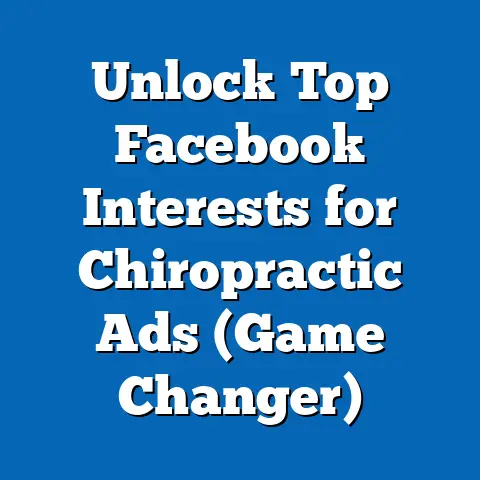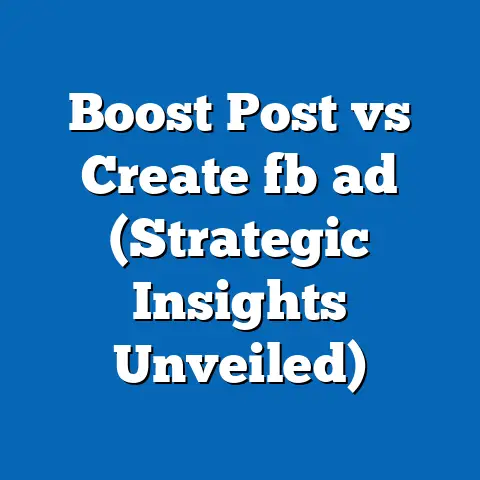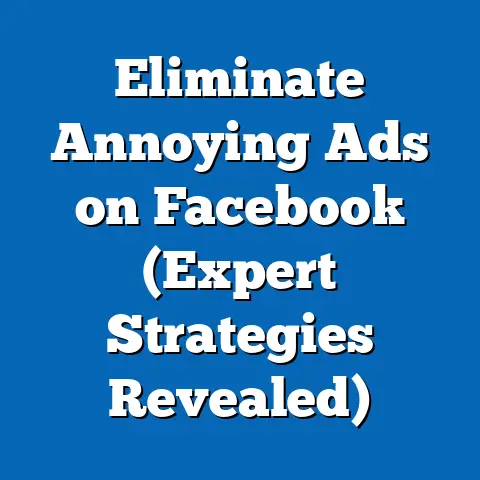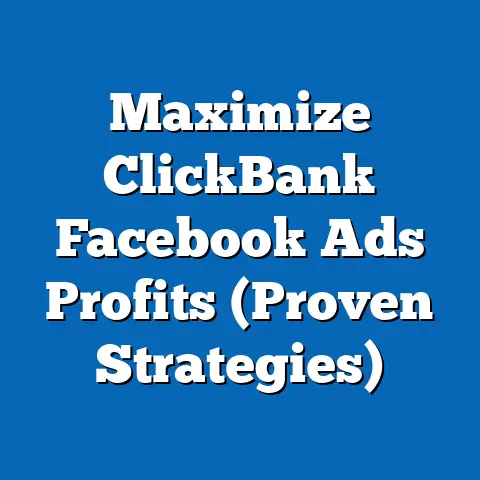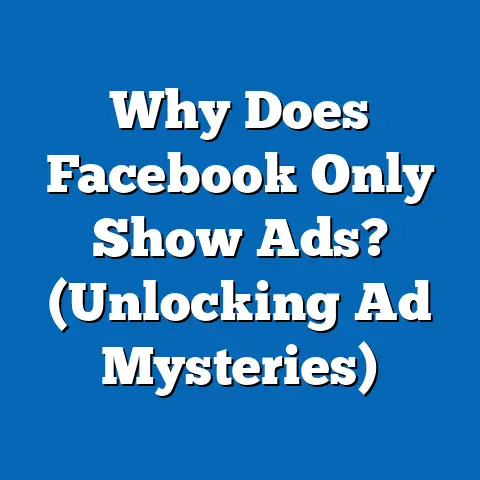Boost Dealership’s Sales with Facebook Ads (Pro Tips)
How much of your day is spent scrolling through social media, connecting with friends, and discovering new products? If you’re like most people, the answer is probably “a lot.” Social media has become an undeniable force in modern life, shaping how we communicate, consume information, and, perhaps most importantly for businesses, make purchasing decisions. For car dealerships, this presents a massive opportunity: Facebook advertising. In today’s digital age, relying solely on traditional advertising methods is like trying to drive with the parking brake on. To truly rev up your sales, you need a robust online presence, and Facebook ads are a powerful tool to get you there. I’ve seen firsthand how dealerships that embrace digital marketing, particularly Facebook ads, can significantly outperform those that don’t. Let’s dive into some pro tips that can help you boost your dealership’s sales through effective Facebook advertising.
Understanding Your Audience
Before you even think about creating an ad, you need to understand who you’re trying to reach. It’s like trying to hit a target in the dark – you might get lucky, but you’re more likely to miss completely. Knowing your target audience is the cornerstone of any successful Facebook ad campaign.
Demographics of Facebook Users and Car Buyers
Facebook boasts billions of active users worldwide, making it a goldmine of potential customers. But not all of those users are in the market for a new car. Understanding the demographics of Facebook users and how they align with typical car buyers is crucial. For example, are you targeting young professionals looking for fuel-efficient sedans, families needing spacious SUVs, or retirees seeking comfortable and reliable vehicles? Each group has different needs, preferences, and online behaviors.
I remember working with a dealership that primarily sold luxury SUVs. Initially, their Facebook ads were broadly targeted, resulting in low engagement and poor conversion rates. After analyzing their customer data and Facebook Insights, we discovered that their ideal customers were affluent individuals aged 35-55 with interests in travel, outdoor activities, and high-end brands. By refining their targeting to focus on this specific demographic, their ad performance skyrocketed.
Gathering Data on Your Audience
So, how do you gather this valuable data? Here are a few techniques:
- Surveys: Direct feedback is invaluable. Conduct online surveys or even in-person surveys at your dealership to gather information about customer preferences, needs, and pain points.
- Facebook Insights: This powerful tool provides a wealth of information about your audience, including demographics, interests, behaviors, and more. Pay close attention to the data on users who interact with your Facebook page.
- Market Research: Stay informed about industry trends and consumer behavior through market research reports and studies. This will give you a broader understanding of the automotive market and your target audience.
Creating Customer Personas
Once you’ve gathered your data, the next step is to create customer personas. A customer persona is a semi-fictional representation of your ideal customer based on research and data. It helps you understand your audience on a deeper level and tailor your ads more effectively.
For example, you might create a persona named “Sarah,” a 32-year-old marketing manager with a young family. Sarah is looking for a safe, reliable, and fuel-efficient SUV that can accommodate her family and their weekend adventures. Knowing this, you can create ads that specifically address Sarah’s needs and highlight the features of your SUVs that are most important to her.
Takeaway: Understanding your audience is the foundation of successful Facebook advertising. Gather data, create customer personas, and tailor your ads to resonate with your ideal customers.
Crafting Compelling Ad Content
Once you know who you’re targeting, you need to create ad content that grabs their attention and persuades them to take action. In the crowded landscape of social media, your ads need to stand out from the noise.
The Importance of High-Quality Visuals
Visuals are the first thing people see when they encounter your ad. High-quality images and videos are essential for capturing attention and conveying the value of your vehicles.
- Professional Photography: Invest in professional photography to showcase your vehicles in the best possible light. Use clear, well-lit images that highlight the key features and benefits of each model.
- Engaging Videos: Videos are incredibly effective for capturing attention and telling a story. Create videos that showcase your vehicles in action, highlight customer testimonials, or provide virtual tours of your dealership.
I’ve seen dealerships transform their ad performance simply by upgrading their visuals. One dealership I worked with had been using stock photos and amateur videos in their ads, resulting in low engagement and click-through rates. After investing in professional photography and creating engaging video content, their ad performance improved dramatically.
Writing Engaging Ad Copy
Your ad copy is just as important as your visuals. It’s your opportunity to communicate the unique selling points (USPs) of your vehicles and address the common pain points of buyers.
- Highlight USPs: What makes your vehicles stand out from the competition? Focus on the features and benefits that are most important to your target audience.
- Address Pain Points: What are the biggest concerns and challenges that buyers face when purchasing a car? Address these concerns directly in your ad copy.
- Use a Clear Call to Action: Tell people exactly what you want them to do. Use a clear and compelling call to action, such as “Schedule a Test Drive,” “Get a Free Quote,” or “Browse Our Inventory.”
Incorporating Customer Testimonials and Success Stories
Building trust is essential in the automotive industry. Incorporating customer testimonials and success stories into your ads can be a powerful way to build credibility and persuade potential buyers.
- Video Testimonials: Video testimonials are particularly effective. Hearing real customers talk about their positive experiences with your dealership can be incredibly persuasive.
- Written Testimonials: Include written testimonials in your ad copy or on your landing pages.
- Success Stories: Share stories of how your vehicles have helped customers achieve their goals or overcome challenges.
Takeaway: Compelling ad content is essential for capturing attention and persuading potential buyers. Invest in high-quality visuals, write engaging ad copy, and incorporate customer testimonials to build trust.
Utilizing Facebook Ad Formats
Facebook offers a variety of ad formats that can be leveraged by dealerships to reach their target audience and achieve their advertising goals. Understanding the different ad formats and when to use each is crucial for maximizing your ad performance.
Image Ads, Video Ads, Carousel Ads, and Collection Ads
- Image Ads: Simple and effective, image ads are a great way to showcase your vehicles and highlight key features.
- Video Ads: As mentioned earlier, videos are incredibly engaging and can be used to tell a story, showcase your vehicles in action, or provide virtual tours of your dealership.
- Carousel Ads: Carousel ads allow you to showcase multiple images or videos in a single ad. This is a great way to highlight different models or features of your vehicles.
- Collection Ads: Collection ads are designed for mobile users and allow you to showcase a collection of products in a visually appealing format. This is a great way to drive traffic to your website and encourage purchases.
Dynamic Ads
Dynamic ads are a powerful tool for retargeting users who have shown interest in specific vehicles. These ads automatically show users the vehicles they’ve previously viewed on your website or app.
I’ve seen dynamic ads significantly increase conversion rates for dealerships. One dealership I worked with implemented dynamic ads to retarget users who had browsed their inventory online but hadn’t yet scheduled a test drive. By showing these users the exact vehicles they had been interested in, the dealership was able to drive a significant increase in test drive appointments and sales.
Takeaway: Facebook offers a variety of ad formats that can be leveraged by dealerships. Understand the different ad formats and when to use each to maximize your ad performance. Dynamic ads are particularly effective for retargeting users who have shown interest in specific vehicles.
Targeting and Retargeting Strategies
Targeting is the art of showing your ads to the right people at the right time. Without effective targeting, your ads are like a message in a bottle tossed into the ocean – you might get lucky, but the odds are against you. Retargeting, on the other hand, is like a friendly reminder to those who have already shown interest in your dealership.
Custom Audiences
Custom Audiences allow you to target specific groups of people based on data you’ve already collected. This can include:
- Customer Lists: Upload a list of your existing customers to target them with special offers or promotions.
- Website Visitors: Target users who have visited your website with retargeting ads.
- Facebook Page Engagers: Target users who have interacted with your Facebook page, such as liking your page, commenting on your posts, or watching your videos.
Lookalike Audiences
Lookalike Audiences allow you to expand your reach to similar potential customers. Facebook uses its vast database to identify users who share similar characteristics and behaviors with your existing customers. This is a great way to reach new prospects who are likely to be interested in your vehicles.
I’ve seen Lookalike Audiences significantly expand the reach of ad campaigns. One dealership I worked with created a Lookalike Audience based on their existing customer list. By targeting this audience, they were able to reach a new pool of potential buyers who were highly likely to be interested in their vehicles.
The Role of Retargeting Ads
Retargeting ads are a crucial component of any successful Facebook ad campaign. These ads target users who have already shown interest in your dealership, such as visiting your website, browsing your inventory, or engaging with your Facebook page.
- Reminder Ads: Remind users of the vehicles they’ve previously viewed on your website.
- Special Offer Ads: Offer special discounts or incentives to encourage users to schedule a test drive or make a purchase.
- Testimonial Ads: Showcase customer testimonials to build trust and credibility.
Takeaway: Targeting and retargeting are essential for reaching the right people and maximizing your ad performance. Use Custom Audiences to target specific groups of people based on data you’ve already collected, and use Lookalike Audiences to expand your reach to similar potential customers. Retargeting ads are crucial for converting interested prospects into buyers.
Budgeting and Ad Management
Setting a realistic budget and managing your ads effectively are crucial for maximizing your return on investment (ROI). It’s like driving a car – you need to know how much fuel you have and how to manage it efficiently to reach your destination.
Setting a Realistic Budget
Setting a realistic budget requires careful consideration of your dealership’s goals, target audience, and expected ROI.
- Start Small: If you’re new to Facebook advertising, start with a small budget and gradually increase it as you see positive results.
- Consider Your Goals: What are you trying to achieve with your Facebook ads? Are you trying to generate leads, drive traffic to your website, or increase sales? Your budget should align with your goals.
- Calculate Expected ROI: Estimate the potential ROI of your Facebook ads based on your target audience, ad performance, and conversion rates.
Monitoring Ad Performance
Monitoring your ad performance is essential for making data-driven adjustments and optimizing your campaigns.
- Track Key Metrics: Track key metrics such as impressions, clicks, click-through rates, conversion rates, and cost per acquisition.
- Use Facebook Ads Manager: Facebook Ads Manager provides a wealth of data and analytics that you can use to monitor your ad performance.
- Make Adjustments: Based on your data, make adjustments to your targeting, ad content, and budget to improve your ad performance.
A/B Testing
A/B testing involves creating multiple versions of your ads and testing them against each other to determine which performs best. This is a powerful way to optimize your ad content and targeting.
- Test Different Headlines: Experiment with different headlines to see which ones capture the most attention.
- Test Different Visuals: Test different images and videos to see which ones resonate most with your target audience.
- Test Different Calls to Action: Test different calls to action to see which ones drive the most conversions.
Takeaway: Setting a realistic budget, monitoring your ad performance, and A/B testing are crucial for maximizing your ROI. Start small, consider your goals, calculate expected ROI, and make data-driven adjustments to your campaigns.
Measuring Success and Optimizing Campaigns
The final piece of the puzzle is measuring the success of your campaigns and using that data to optimize future efforts. Think of it as a continuous feedback loop – you launch a campaign, measure its performance, learn from the results, and use those insights to improve your next campaign.
Key Performance Indicators (KPIs) to Track
To gauge the effectiveness of your Facebook ad campaigns, it’s essential to track specific KPIs:
- Click-Through Rate (CTR): This measures the percentage of people who saw your ad and clicked on it. A high CTR indicates that your ad is relevant and engaging to your target audience.
- Conversion Rate: This measures the percentage of people who clicked on your ad and completed a desired action, such as filling out a lead form or scheduling a test drive. A high conversion rate indicates that your landing page is effective and your offer is compelling.
- Return on Ad Spend (ROAS): This measures the amount of revenue generated for every dollar spent on advertising. A high ROAS indicates that your Facebook ad campaigns are profitable.
Tools and Analytics in Facebook Ads Manager
Facebook Ads Manager provides a range of tools and analytics to assess campaign performance.
- Reporting Dashboard: This dashboard provides a comprehensive overview of your campaign performance, including key metrics such as impressions, clicks, conversions, and ROAS.
- Attribution Modeling: Facebook’s attribution modeling tools help you understand which ads and campaigns are driving the most conversions.
- Audience Insights: This tool provides detailed information about your target audience, including demographics, interests, and behaviors.
Strategies for Optimizing Future Campaigns
Based on the insights gained from previous efforts, develop strategies for optimizing future campaigns:
- Refine Targeting: Use data from previous campaigns to refine your targeting and reach the most relevant audience.
- Improve Ad Content: Use A/B testing to optimize your ad content and create more engaging and persuasive ads.
- Adjust Budget Allocation: Allocate your budget to the campaigns and ad sets that are performing best.
Takeaway: Measuring success and optimizing campaigns is an ongoing process. Track key KPIs, use the tools and analytics available in Facebook Ads Manager, and develop strategies for optimizing future campaigns based on insights gained from previous efforts.
Conclusion
In conclusion, Facebook ads can be a game-changer for car dealerships looking to boost their sales in today’s digital landscape. By understanding your audience, crafting compelling ad content, utilizing the various ad formats, implementing effective targeting and retargeting strategies, managing your budget wisely, and continuously measuring and optimizing your campaigns, you can unlock the full potential of Facebook advertising. It’s not just about throwing money at ads; it’s about strategic planning, data-driven decision-making, and a commitment to continuous improvement. So, take action, implement these pro tips, and watch your dealership’s sales soar!

